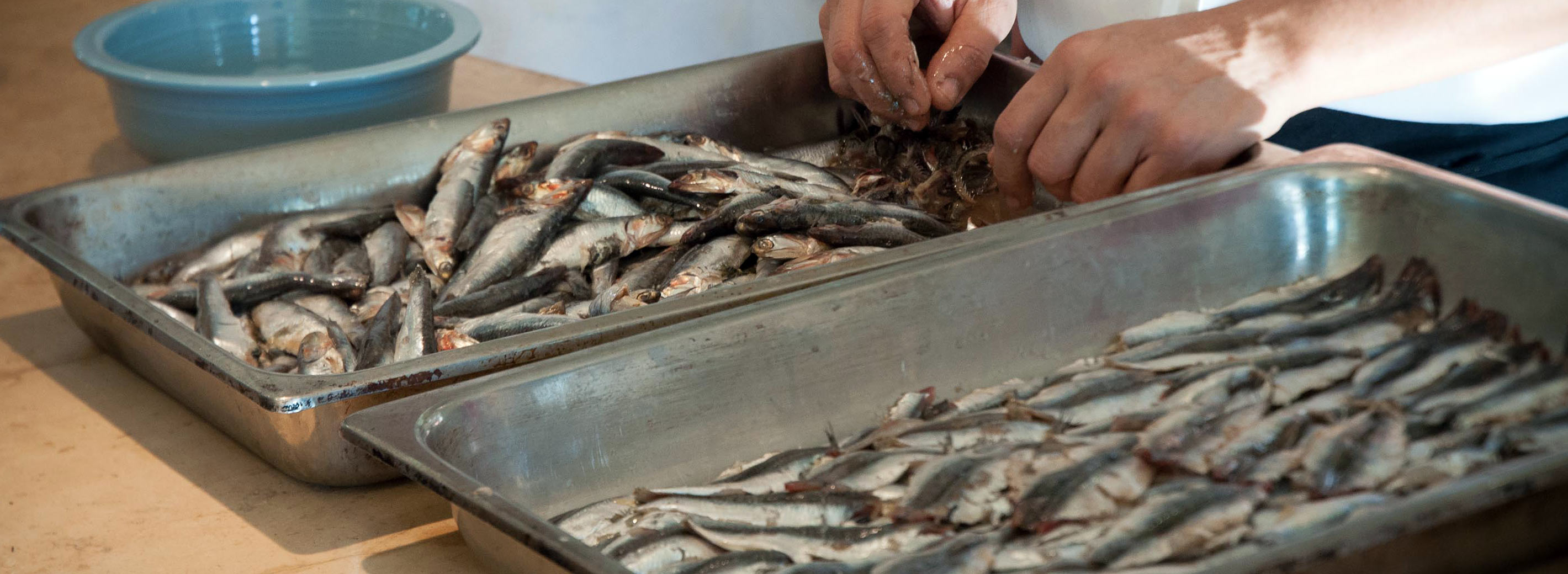
Fish to Fork
Defining “local and sustainable” for seafood sourcing
“Eating local” has become a way of life for many consumers, but even dedicated locavores flounder when they enter the murky waters of local seafood. Just because a fish came off a nearby dock doesn’t mean it was “locally caught,” and “local” doesn’t always equal “sustainable” with regard to certain species or catch methods. Meanwhile, many conscientious consumers avoid farmed seafood entirely, unaware that responsible local producers exist.
In September 2011, we announced a breakthrough in sustainable seafood sourcing with our Fish to Fork preferred purchasing program, the companion to our Farm to Fork program launched in 1999. Developed with help from a marine science expert, the Fish to Fork program outlines what “local” and “small-scale” mean for both wild and farmed seafood and elevates certain overlooked species that have both great flavor and robust supplies.
Among the guidelines:
- Traceability: Seafood suppliers must present a reliable system of traceability from the farm or the boat to Bon Appétit kitchens.
- Size: Boats must be individually owned and operated and not process the seafood on board. Aquaculture operations will be limited to those grossing less than $5 million per year per species. Small-scale fishing and aquaculture operations that practice integrated multi-species fishing or aquaculture will be emphasized.
- Distance: Boats should travel no more than 100 miles out to sea per trip. Distribution distance for wild fish or aquaculture products is limited to 500 miles by truck from dock or farm to Bon Appétit kitchens.
- Species preferences: Low-on-the-food-chain species (such as sardines, oysters); species whose edible portion could be better utilized (such as scallops, much of which gets discarded by U.S. processors); less-widely eaten larger species (Seafood Watch “green”- or “yellow”-rated) that can substitute for one of the “Top Ten” species, such as tuna, whose popularity is endangering the species.
We also designated 14 chefs in different areas of the country as “piscators.” Like the Farm to Fork foragers, they locate and develop purchasing relationships with local fishers and fish farmers who meet the criteria and who will then serve clusters of cafés. Similarly, Fish to Fork will also channel our supply-chain clout toward helping hundreds more small, environmentally responsible producers, creating local jobs and healthier communities.